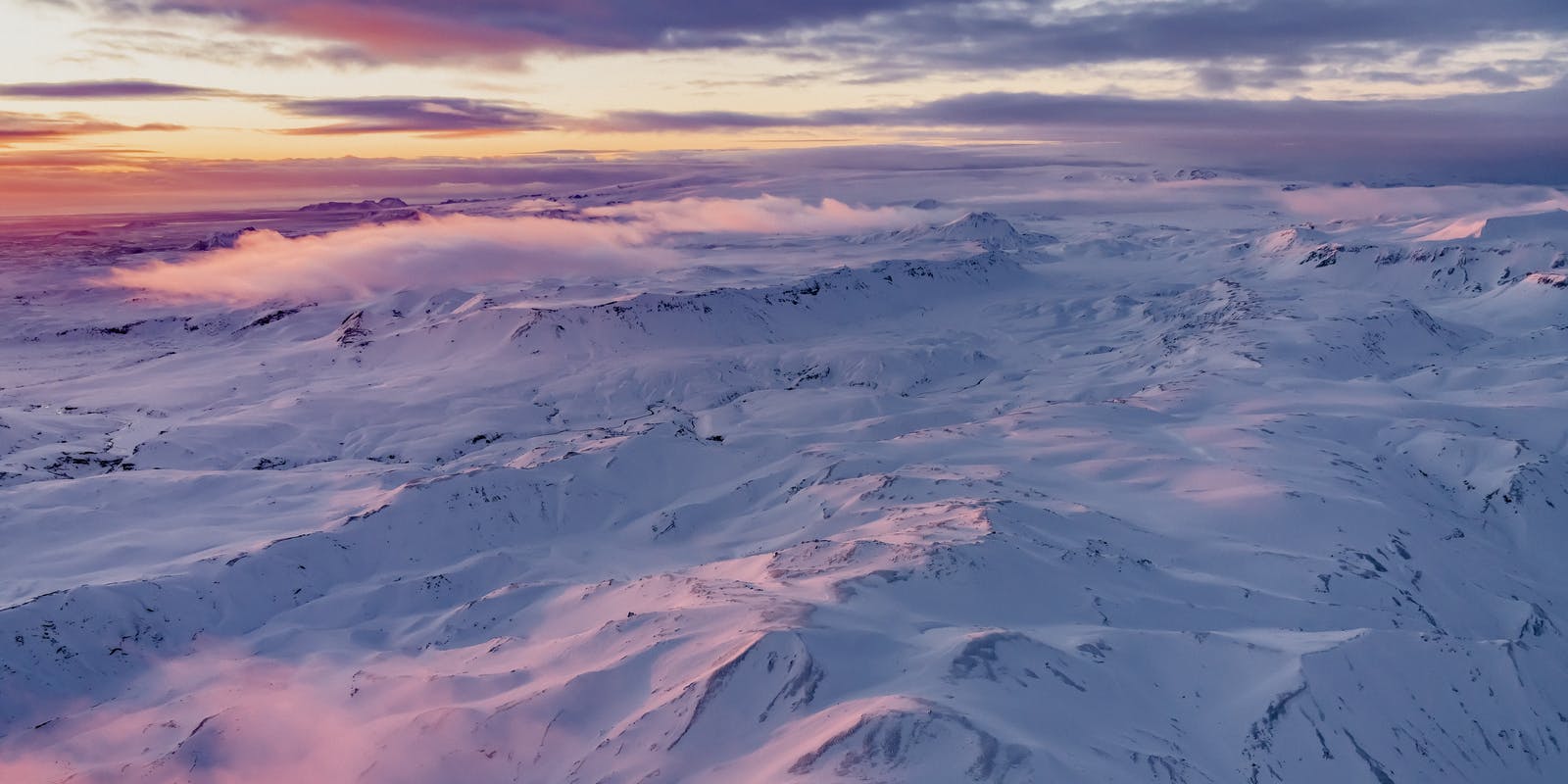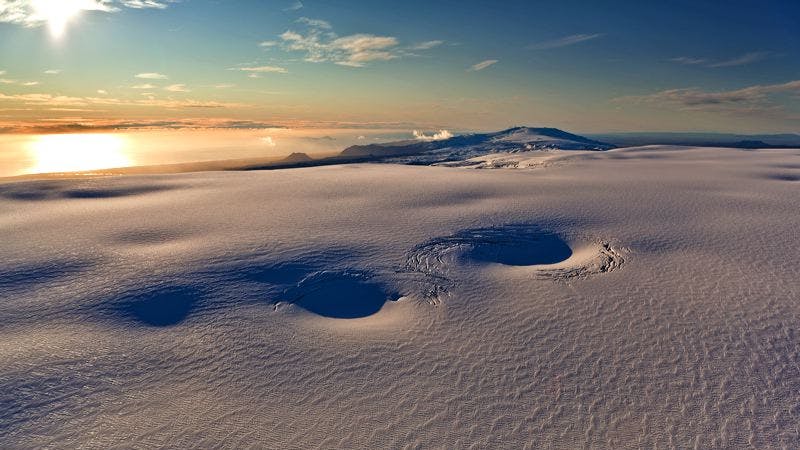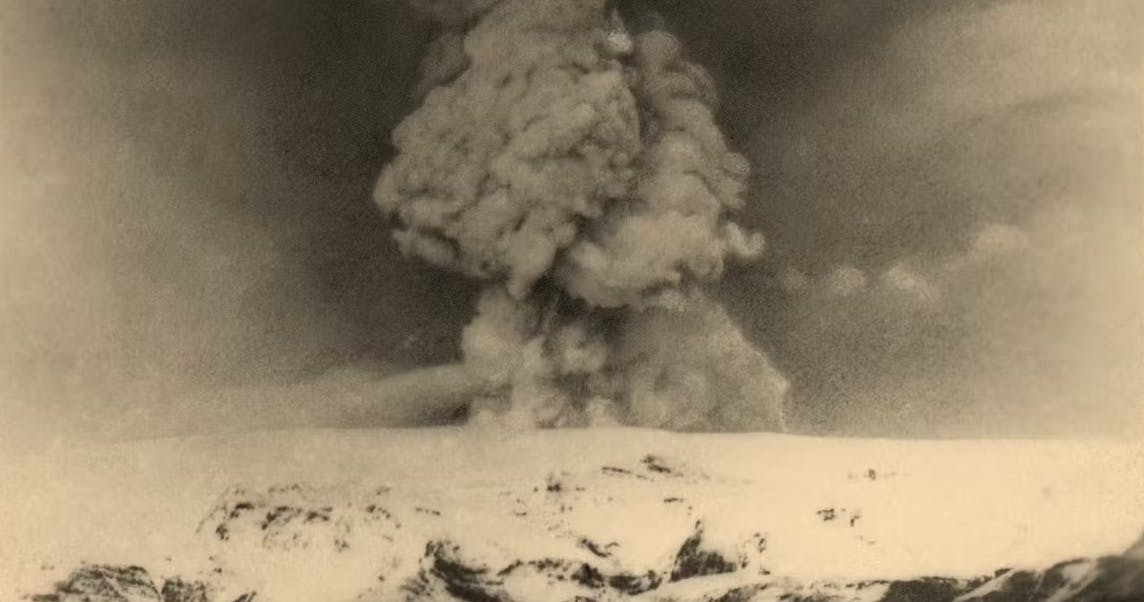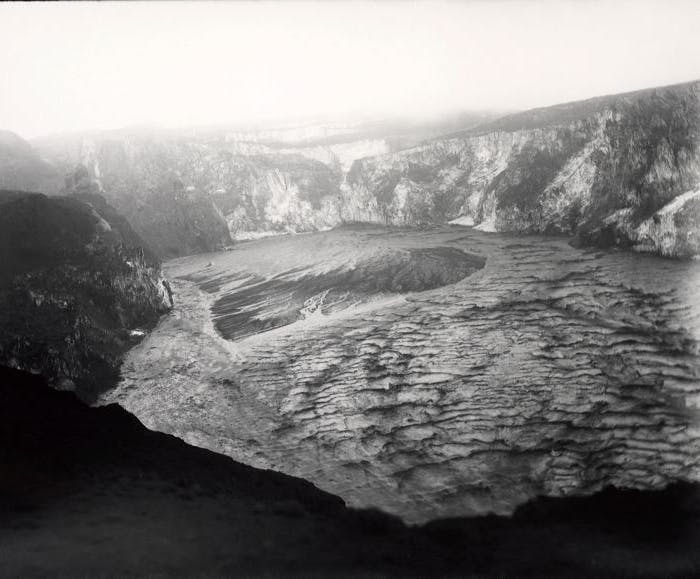
The Eruptions of Katla Volcano
Iceland’s landscape is dotted with hot springs, waterfalls, glaciers, and volcanoes; it’s what keeps travellers coming back. Volcanoes, particularly with the recent eruptions on the Reykjanes Peninsula, have been a significant tourist draw.
However, the volcano Katla differs significantly from the small “tourist eruptions” in 2021 and 2022. Katla is a massive subglacial volcano located under the mighty Mýrdalsjökull Glacier. While some minor volcanic eruptions have not broken through the ice in recent years, it’s been more than 100 years since Katla’s last major eruption.
Indeed, Katla last erupted in 1918; since 920 AD, only 20 eruptions have been recorded. Even though Katla is an active volcano, it does not mean it is expected to erupt tomorrow. Scientists monitor Icelandic volcanoes very closely.
What Type of Volcano Is Katla?

Katla is a subglacial central volcano that is one of the largest volcanoes on the island. Katla is located under the ice cap of Iceland’s fourth-largest glacier, Mýrdalsjökull. It’s an active volcano, but there’s no need to be concerned about an eruption as Icelandic geologists closely monitor volcanoes for activity. If Katla begins to tremble, there will be warnings, tours will be suspended in advance, and roads will be closed.
When Did Katla Last Erupt?
There were three minor subglacial eruptions in June 1955, July 1999, and June 2011, but the last major eruption occurred in October 1918. Lava bombs and pumice shot out meters into the air and 10-20 km high eruption plume formed over the volcano. The eruption lasted for 24 days, and it was likely a mighty VEI-5 level eruption.
To put it in perspective, the 1918 eruption was so powerful it resulted in extending the southern coast by about 5 kilometres due to laharic flood deposits. Katla’s present dormancy is among the longest in recorded history.
Katla Eruption History

Katla has an active history; there have been 20 documented eruptions of Katla between the years 930 and 1918 and a few might be undocumented. These eruptions have happened every 20 to 90 years, and scientists say that Katla is long overdue for an eruption.
Here are the known notable eruptions of Katla:
- 920: The first eruption after the settlement. Medium sized. Undocumented eruption but a tephra layer exists witnessing the eruption
- 939: An eruption in Katla and a hazardous glacial flood accompanying the tremendous Eldgjá eruption.
- 12th century: A small sparsely documented eruption
- 1179: A small eruption but the glacial flood ruined some farms
- 1245: A small eruption
- 1262: An eruption leads to a large jökulhlaup (glacial flood) and tephra fall
- 1357: Medium sized eruption, heavy tephra fall. Glacial flood (jökulhlaup) destructed many farms
- 1416: This eruption and subsequent jökulhlaup cause severe damage
- 1440: A small eruption and sparsely documented, no damage
- 15th century: Small undocumented eruption, a thin tephra layer has revealed its existence
- 1500: A large undocumented eruption. Heavy tephra fall all over south and southwest Iceland along with Reykjavík.
- 1580: A small eruption, no damage
- 1612: Small eruption and jökulhlaup occurs
- 1625: A powerful eruption. Tephra fall experienced in Faroe Island and in Trondheim in Norway. This eruption lead to significant flooding
- 1660: Medium sized eruption along with heavy tephra fall and flooding. The farm and church in Höfðabrekka destroyed
- 1721: This eruption caused a large jökulhlaup that lead to significant property damage and changes in local geography
- 1755: A powerful eruption, the largest one in Katla in historical times. Hazardous glacial flood and heavy tephra fall, people killed by lightnings from the volcanic cloud.
- 1823: A small eruption, insignificant damage
- 1860: A small eruption, some damage in Mýrdalssandur
- 1918: The most recent large eruption with heavy tephra fall and glacial flood. The flood deposits moved out the coastline by many hundred meters
Katla’s previous eruptions have had a Volcanic Explosivity Index (VEI) of between 4 to 6 on a scale of 0 to 8. To compare, the 2010 eruption at Eyjafjallajökull, which shut down air traffic across Europe, had a VEI of 4. Icelanders don’t underestimate the power of Katla.
Is Katla Safe To Visit?

There are ways to visit Katla safely; the most common is a guided tour of the Katla ice cave. Trained glacier guides lead travellers to explore the massive ice cave that is open to the public year-round. Please remember to never attempt to walk on a glacier without a trained guide, as some sinkholes and crevices could lead to serious injury. Guides provide a safety briefing, any equipment needed, and transportation to the cave site.
Experience an Eruption
At Perlan, the Forces of Nature exhibit effectively illustrates the intense magnitude of these eruptions, showing visitors the transformational impact of such events on the surrounding environment. It provides a tangible connection between the volatile natural forces at work beneath our feet and the ever-changing world we live in.
FAQ

How many people died in the Katla eruption of 1918?
There were no recorded deaths in the 1918 eruption of Katla. It has been said that a group of farmers herding sheep had a close call, but they escaped in time.
How big was the Katla eruption of 1918?
The Katla eruption of 1918 lasted for 24 days and wreaked havoc on the area surrounding the volcano. While there were, fortunately, no deaths, the glacial floods wiped out farms and killed livestock. It was a catastrophic event.
How often does Katla erupt?
Katla typically erupts every 20-80 years; however, it has been more than 100 years since its last major eruption. Geologists are waiting for signs of a big one, but as of June 2023, Katla remains dormant.
What would happen if Katla erupted?
There are warnings in place in Iceland, and alerts would be issued if Katla starts stirring. The surrounding area would be evacuated, tours would be cancelled, and roads closed. Earthquakes would come before an eruption, and authorities are equipped with the knowledge and resources to keep people safe.
Popular articles

Reykjanes Volcanoes Overview
Enjoy a complete overview of the Reykjanes Volcanoes from 2021-2024. Learn about its geology, recent activity, and visitor tips for a safe, memorable experience.

Reykjanes Peninsula Volcanoes: Sundhnúksgígar Eruptions
The anticipated volcano has erupted in the Reykjanes Peninsula, the site is being called Sundhnúkagígar. See the historic insights on the seismic activity and volcanic eruptions.

Earthquakes in Iceland
Earthquakes in Iceland are a fact of life. Each year, hundreds of small tremors shake the earth, a reminder of the country’s position on a tectonic plate boundary.

Volcano Museums and Exhibitions in Iceland
If you don't manage to visit an actively erupting volcano in Iceland - Experience its force at one of these excellent volcano museums and exhibitions in Iceland.

Top 10 Places To See the Northern Lights in Iceland
You can see the northern lights across the country, but some spots are more suitable than others. Find the best place to see the northern lights in Iceland.

Ice Caves From Reykjavik
Travel beyond the capital for a closer look at an ice cave under one of Iceland’s glaciers. If you can’t spare the time, experience Perlan’s ice cave in Reykjavik.